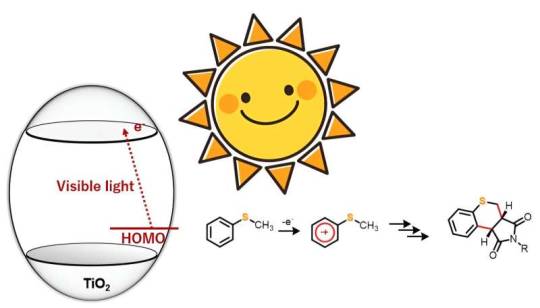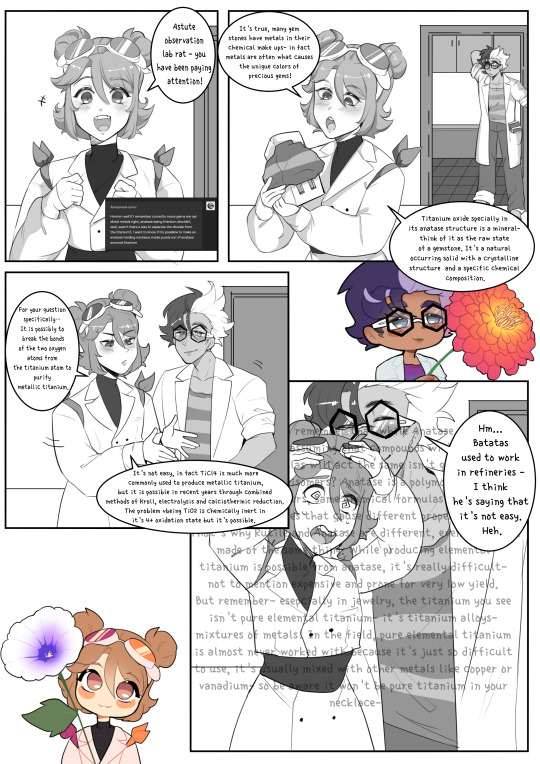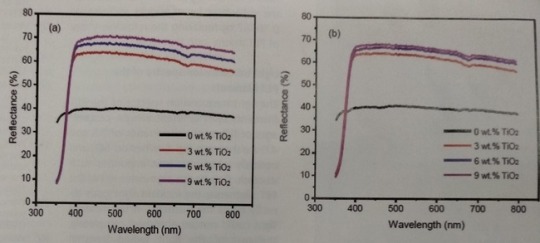#Titanium dioxide (TiO2)
Text
So sorry for disappearing without a word for so long!
I didn't want Sonic Prime spoilers, but didn't have the money for netflix to watch the show. I was planning on doing a quick marathon of it and my fam's house but every time I'd try my mom would be like "You want to watch sonic show instead of spend time with us? :(" soooo it took a while
My birthday was last week and when my mom asked if I had a present wishlist I told her I wanted to finish the show, so I'm finally done (I also got sonic legos. Boy I'm obsessed)
I've also been super busy gearing up to graduate in May. For my english major I'm writing an entire novel, and for my very mineralogy-focused geology minor I'm writing a report on all of the minerals discovered in the past year. Both are super fun but have me super busy.
I wanna give a thank you to @cinnatwolover, you don't know how much it means to me. Knowing that people enjoy the stuff I create so much is really helping with my confidence and motivation for my novel.
#did you know the mineral titanium wasn't discovered until 2010?#the element was discovered in 1790something I believe but a crystal wasn't found for that long#It is almost always found as Titanium Dioxide (TiO2)#I'm learning so many cool things
4 notes
·
View notes
Text
You can buy Tio2 titanium dioxide in india from Ximkart. The best place to buy Tio2 titanium dioxide in India is Ximkart. They have good customer service and deliver their product within 24 hours.. At Ximkart, we are dedicated to providing our customers with the best products and services possible. We offer Tio2 titanium dioxide in India from a trusted manufacturer at an affordable price. Our goal is to make sure that our customers are satisfied with their purchase. For more information visit our website www.ximkart.com Or Email us at [email protected].
0 notes
Text

Chemical synthesis using titanium dioxide: An eco-friendly and innovative approach
Heterocyclic compounds are organic molecules with a ring structure comprising at least two or more elements. In most cases, these rings are composed of carbon atoms along with one or more other elements such as nitrogen, oxygen, or sulfur. They are highly sought after as raw materials in the chemical and pharmaceutical industry, owing to their versatility and excellent physiological activities.
While several methods are available for synthesizing these compounds, most of them involve high temperature and pressure conditions, or the use of precious metal catalysts, adding to the economic and environmental cost of producing heterocyclic organic compounds.
Now, however, a team of researchers from Japan and Bangladesh have proposed a simple yet effective method for overcoming these challenges. Their study was recently published in the journal Advanced Synthesis & Catalysis. Using the proposed strategy, the team demonstrated the synthesis of 20 sulfur-containing heterocyclic compounds in the presence of photocatalyst titanium dioxide (TiO2) and visible light.
Read more.
19 notes
·
View notes
Text
Weather Modification Patents
(Conspiracy Theory, except it’s not)
YEAR - PATENT NUMBER - PATENT NAME
1891 – US462795A – method of producing rain-fall
1914 – US1103490A – rain maker (balloon images)
1917 – US1225521A – protection from poisonous gas in warfare
1920 – US1338343A – process and apparatus for the production of intense artificial clouds, fogs, or mists
1924 – US1512783A – composition for dispelling fogs
1927 – US1619183A – process of producing smoke clouds from moving aircraft
1928 – US1665267A – process of producting artificial fogs
1932 – US1892132A – atomizing attachment for airplane engine exhausts
1933 – US1928963A – electrical system and method (for spraying chemtrails)
1934 – US1957075A – airplane spray equipment
1936 – US2045865A – skywriting apparatus
1936 – US2052626A – method of dispelling fog (mit)
1937 – US2068987A – process of dissipating fog
1939 – US2160900A – method for vapor clearing
1941 – US2232728A – method and composition for dispelling vapors
1941 – US2257360A – desensitized pentaerythritol tetranitrate explosive
1946 – US2395827A – airplane spray unit (us. dept. of agriculture)
1946 – US2409201A – smoke-producing mixture
1949 – US2476171A – smoke screen generator
1949 – US2480967A – aerial discharge device
1950 – US2527230A – method of crystal formation and precipitation
1951 – US2550324A – process for controlling weather
1951 – US2570867A – method of crystal formation and precipitation (general electric)
1952 – US2582678A – material disseminating apparatus for airplanes
1952 – US2591988A – production of tio2 pigments (dupont)
1952 – US2614083A – metal chloride screening smoke mixture
1953 – US2633455A – smoke generator
1954 – US2688069A – steam generator
1955 – US2721495A – method and apparatus for detecting minute crystal forming particles suspended in a gaseous atmosphere (general electric)
1956 – US2730402A – controllable dispersal device
1957 – US2801322A – decomposition chamber for monopropellant fuel
1958 – US2835530A – process for the condensation of atmospheric humidity and dissolution of fog
1959 – US2881335A – generation of electrical fields (haarp – for re-charging clouds!)
1959 – US2903188A – control of tropical cyclone formation
1959 – US2908442A – method for dispersing natural atmospheric fogs and clouds
1960 – US2962450A – fog dispelling composition (see references)
1960 – US2963975A – cloud seeding carbon dioxide bullet
1961 – US2986360A – aerial insecticide dusting device
1962 – US3044911A – propellant system
1962 – US3056556A – method of artificially influencing the weather
1964 – US3120459A – composite incendiary powder containing metal coated oxidizing salts
1964 – US3126155A – silver iodide cloud seeding generator (main commercial ingredient)
1964 – US3127107A – generation of ice-nucleating crystals
1964 – US3131131A – electrostatic mixing in microbial conversions
1965 – US3174150A – self-focusing antenna system (haarp)
1966 – US3257801A – pyrotechnic composition comprising solid oxidizer, boron and aluminum additive and binder
1966 – US3234357A – electrically heated smoke producing device
1966 – US3274035A – metallic composition for production of hydroscopic smoke
1967 – US3300721A – means for communication through a layer of ionized gases (haarp)
1967 – US3313487A – cloud seeding apparatus
1967 – US3338476A – heating device for use with aerosol containers
1968 – US3410489A – automatically adjustable airfoil spray system with pump
1969 – US3429507A – rainmaker
1969 – US3430533A – aircraft dispensor pod having self-sealing ejection tubes
1969 – US3432208A – fluidized particle dispenser (us air force)
1969 – US3437502A – titanium dioxide pigment coated with silica and aluminum (dupont)
1969 – US3441214A – method and apparatus for seeding clouds
2001 -US20030085296A1 - Hurricane and tornado control device
#pay attention#educate yourself#educate yourselves#reeducate yourself#knowledge is power#reeducate yourselves#think for yourself#think for yourselves#think about it#do your homework#do your research#do your own research#question everything#ask yourself questions#ask yourselves#look things up
31 notes
·
View notes
Link
Teacher masking a child during COVID pandemic. A recent study confirmed disposable face masks released dangerous levels of the carcinogen titanium dioxide (TiO2). The masks were required by Dr. Fauci and his cronies during the COVID pandemic. The study found that the TiO2 levels exceeded the acceptable exposure level by four times or more. Here…
39 notes
·
View notes
Note
Hmmm well if I remember correctly many gems are oxidized metals right, anatase being titanium dioxide?, well, wasn't there a way to seperate the dioxide from the titanium?, I want to know if it's possible to make an anatase holding necklace made purely out of anatase sourced titanium

Batatas: Astute observation, lab rat- you really have been paying attention!
Batatas: It's true, many gemstones have metals in their chemical make ups- in fact, metals are often what cause the unique colors of precious gems!
Batatas: Titanium oxide especially in its anatase structure is a mineral- think of it as the raw state of a gemstone. It's a naturally occurring solid with a crystalline structure and a clear chemical composition.
Batatas: For your question specifically… It is possible to break the bonds of the two oxygen atoms from the titanium atom to purify metallic titanium. It's not easy, in fact, TiCl4 is much more commonly used to produce metallic titanium, but it is possible in recent years through combined methods of Kroll, electrolysis, and calciothermic reduction. These all have their own issues, TiO2 is chemically inert in its 4+ oxidation state but it's possible.
Batatas: It's important to remember that while Anatase is made of titanium oxide, assuming that compounds with the same chemical formulas will act the same isn't quite true- Remember about isomers? Anatase is a polymorph crystal equivalents of isomers, same chemical formulas but differing 3D structures that cause different properties! That's why Rutile and Anatase are different, even if they're made of the same thing.
Batatas: While producing elemental titanium is possible from anatase, it's really difficult. Not to mention expensive and prone to very low yield. But remember- especially in jewelry, the titanium you see isn't pure elemental titanium- it's titanium alloys, mixtures of metals! In the field, pure elemental titanium is almost never worked with because it's just so difficult to use, it's usually mixed with other metals like copper or vanadium- so be aware it won't be pure titanium in your necklace-
Jacq: Hm... Batatas used to work in refineries before he became a teacher- I think he's saying that it's not easy. Heh.
(I did so much research for this ask)
#pokemon askblog#pokemon#pokemon oc askblog#pokemon oc#pokemon scarlet and violet#pokemon sv#pokemon scarlet and violet oc#pokemon sv oc#askblog#oc askblog
10 notes
·
View notes
Link
Excerpt from this story from EcoWatch:
Mars – the company that owns Skittles – invites its customers to “taste the rainbow” when they tear open a package and pour some of the multi-colored candies into their mouths. However, what they’re really tasting is titanium dioxide (TiO2).
Now, a class-action lawsuit filed in the U.S District Court for the Northern District of California Thursday argues that the coloring chemical is a “known toxin” that renders Skittles “unfit for human consumption,” as USA TODAY reported.
“Based on Defendant’s omissions, a reasonable consumer would expect that the Product can be safely purchased and consumed as marketed and sold,” the lawsuit read, as USA TODAY reported. “However, the Products are not safe and pose a significant health risk to unsuspecting consumers.”
TiO2 was approved by the Food and Drug Administration (FDA) for use in food in 1966, according to the Los Angeles Times. The U.S. agency still maintains that it’s safe to use as food coloring as long as no more than one percent of the weight of the food in question is added.
However, the story is different across the Atlantic. In May of 2021, the European Food Safety Authority said there was enough research to suggest the chemical was not safe to eat. This is because it has been linked to genotoxicity – the ability to damage a person’s DNA and therefore cause cancer. In response, the European Commision has moved to ban the chemical in food by August of this year, according to The Washington Post.
13 notes
·
View notes
Text

White Masterbatch Manufacturer in India
White masterbatch is a highly sought-after type of plastic additive that is used to impart a bright and consistent white color to various plastic products. It is typically used in the production of plastic goods that require a white base, such as packaging materials, consumer goods, and automotive parts.
So, what exactly is a white masterbatch? Simply put, it is a concentrated mixture of titanium dioxide (TiO2) and a carrier resin, such as polyethylene (PE) or polypropylene (PP). The TiO2 pigment is added to the carrier resin in high concentrations, resulting in a masterbatch that can be added to plastic products during the manufacturing process to achieve a uniform and opaque white color.
There are several benefits to using white masterbatch in plastic production. For one, it offers a cost-effective alternative to producing white plastic products, as it eliminates the need for manufacturers to purchase expensive pre-colored resins. Additionally, it allows for greater flexibility and control in the manufacturing process, as it can be added to plastic products in varying concentrations to achieve the desired shade of white.
White masterbatch is also highly customizable, as it can be formulated with other additives to achieve specific properties, such as UV resistance, flame retardancy, and antistatic properties. This makes it an ideal additive for a wide range of plastic applications, from food packaging to automotive parts.
However, it is important to note that not all white masterbatch products are created equal. The quality of the masterbatch can vary greatly depending on the manufacturing process and the quality of the raw materials used. For this reason, it is important to work with a reputable supplier who can provide high-quality white masterbatch products that are tailored to the specific needs of your application.
In conclusion, white masterbatch is a valuable additive in the plastic industry that offers a cost-effective and customizable solution for achieving a bright and consistent white color in plastic products. By working with a trusted supplier, manufacturers can ensure that they are using high-quality white masterbatch products that meet their specific requirements and standards.
3 notes
·
View notes
Text
5 notes
·
View notes
Text
Effect of (TiO2) Titanium Dioxide on Polyester
Effect of (TiO2) Titanium Dioxide on Polyester
#polyester #TitaniumDioxide
Effect of (TiO2) Titanium Dioxide on Polyester
Rushikesh Digambar Patil
Department of Textiles (Textile Chemistry)
DKTE’S Textile and Engineering Institute, Ichalkaranji, India
Intern at Textile Learner
Email: [email protected]
Introduction:
TiO2 was added in varying weight percentages to polyethylene terephthalate (PET) filaments at draw ratios of 3.5 and 4.0, respectively.…

View On WordPress
2 notes
·
View notes
Text

Team develops new gold nanocluster-rich titanium dioxide photocatalyst for the oxidative coupling of methane
The hydrocarbon methane is highly abundant on Earth, yet its release is now known to contribute to surges in temperature and climate change. In recent years, researchers have been trying to devise reliable methods to directly convert methane into other fuels and chemicals with valuable real-world applications.
These strategies include catalyst-based methods to prompt the oxidative coupling of methane to substances containing the green gas diatomic carbon (C2). This reaction, however, typically requires extreme and challenging environmental conditions, due to the unfavorable characteristics of the thermocatalysts introduced so far.
Researchers at University College London, University of Liverpool have recently developed a new photocatalyst that could advance the oxidative coupling of methane. This photocatalyst, introduced in Nature Energy, is based on titanium dioxide (TiO2 ) loaded with gold (Au) nanoclusters.
"Photocatalytic oxidative coupling of methane (OCM) produces C2 molecules that can be used as building blocks for synthesis of fuels and chemicals," Xiyi Li, Chao Li and their colleagues wrote in the paper. "However, the yield rate and the selectivity of C2 products are still moderate due to the stable nature of methane molecules."
Read more.
8 notes
·
View notes
Text
The Future of Fresh Air: Innovative Air Purifier Technologies on the Horizon

As concerns about air quality continue to rise, the demand for effective air purification solutions is higher than ever. In the quest for cleaner, healthier indoor environments, researchers and engineers are constantly pushing the boundaries of innovation. This article explores the future of air purification technology, highlighting emerging trends and groundbreaking advancements that promise to revolutionize the way we breathe.
Nanotechnology
One of the most promising developments in air purification is the integration of nanotechnology. Nanoparticles have unique properties that make them highly effective at capturing and neutralizing pollutants on a molecular level. By leveraging nanomaterials such as graphene oxide and carbon nanotubes, future air purifiers could achieve unprecedented levels of efficiency and effectiveness in removing airborne contaminants.
Photocatalytic Oxidation (PCO)
Photocatalytic oxidation (PCO) is another innovative technology poised to shape the future of air purification. PCO systems utilize photocatalysts, typically titanium dioxide (TiO2), which, when activated by ultraviolet (UV) light, generate reactive oxygen species (ROS) that oxidize and break down organic pollutants into harmless byproducts like carbon dioxide and water vapor. This process effectively eliminates a wide range of airborne contaminants, including bacteria, viruses, mold spores, and volatile organic compounds (VOCs).
Electrostatic Precipitation
Electrostatic precipitation is a tried-and-tested technology that is undergoing continual refinement and improvement. This method relies on the principle of electrostatic attraction to capture and remove airborne particles. As air passes through the purifier, electrically charged plates or wires attract and collect particles, effectively purifying the air. Recent advancements in electrostatic precipitation aim to enhance its efficiency and scalability, making it a viable option for large-scale air purification applications.
Advanced Filtration Materials
Innovations in filtration materials are driving significant advancements in air purification technology. Traditional HEPA filters, while highly effective, have limitations in terms of airflow resistance and particle capture efficiency. Researchers are exploring alternative materials, such as electrospun nanofibers, metal-organic frameworks (MOFs), and porous polymers, to overcome these limitations and improve overall performance. These advanced filtration materials offer higher surface area, improved particle capture efficiency, and lower pressure drop, resulting in more efficient and energy-saving air purifiers.
Smart Air Purifiers
The integration of smart technology is revolutionizing the way we interact with air purifiers. Smart air purifiers can connect to Wi-Fi networks and be controlled remotely via smartphone apps or voice assistants. They also feature built-in sensors that monitor air quality in real-time and adjust purification settings accordingly. Additionally, smart purifiers can provide insights and analytics on indoor air quality, helping users make informed decisions to optimize their indoor environments for health and comfort.
Conclusion
The future of air purification is bright, with a myriad of innovative technologies on the horizon. From nanotechnology and photocatalytic oxidation to advanced filtration materials and smart features, the next generation of air purifiers promises to deliver cleaner, healthier indoor air for all. By embracing these advancements, we can create environments where breathing easy is not just a luxury but a fundamental right.
0 notes
Text
Ilmenite Prices, Price Trend, News, Analytics & Forecast

Ilmenite prices fluctuate according to various factors within the global market dynamics. As a primary source of titanium dioxide, ilmenite holds significant value in industries ranging from paints and coatings to plastics and paper. Understanding the nuances of ilmenite pricing requires insight into its production, demand-supply dynamics, and geopolitical influences.
One crucial determinant of ilmenite prices is its extraction and processing costs. Mining operations, especially in regions with abundant ilmenite deposits like Australia, South Africa, and China, directly impact pricing. Factors such as labor costs, infrastructure development, and environmental regulations can influence the overall cost of production, thereby affecting market prices.
Moreover, ilmenite pricing is closely linked to the demand for titanium dioxide (TiO2), its primary derivative. TiO2 finds extensive usage in pigments for paints, plastics, and coatings due to its brightness and opacity. Therefore, fluctuations in these downstream industries significantly impact ilmenite prices. Economic growth, construction activities, and consumer preferences drive the demand for TiO2, consequently influencing ilmenite pricing.
Get Real Time Prices of Ilmenite: https://www.chemanalyst.com/Pricing-data/ilmenite-1582
Global economic trends also play a pivotal role in determining ilmenite prices. Economic downturns or slowdowns in major industrial sectors can lead to reduced demand for TiO2 and, subsequently, ilmenite. Conversely, periods of robust economic growth and industrial expansion tend to increase demand, exerting upward pressure on ilmenite prices.
Supply disruptions can have a profound impact on ilmenite prices. Geopolitical tensions, natural disasters, and regulatory changes can disrupt mining operations or restrict the flow of ilmenite from key producing regions. Such disruptions can create supply shortages, causing prices to surge as demand outstrips available inventory.
Currency fluctuations can affect ilmenite prices, especially in regions where mining and export occur in currencies other than the US dollar. Exchange rate movements can influence the competitiveness of ilmenite exports, thereby impacting prices in international markets.
Environmental regulations and sustainability concerns also influence ilmenite prices. Increased scrutiny on mining practices, carbon emissions, and waste management can lead to higher operational costs for ilmenite producers. Compliance with stringent environmental standards may necessitate investments in cleaner technologies or mitigation measures, which can ultimately translate into higher prices for ilmenite.
Market speculation and investor sentiment can contribute to short-term volatility in ilmenite prices. Speculative trading, futures contracts, and market sentiment regarding global economic conditions can lead to price fluctuations independent of underlying supply and demand fundamentals.
The emergence of alternative materials or technologies poses a long-term challenge to ilmenite prices. Substitutes for TiO2 or innovations in pigment formulations could potentially dampen demand for ilmenite in the future, exerting downward pressure on prices.
In conclusion, ilmenite prices are subject to a complex interplay of factors including production costs, demand from TiO2 industries, global economic trends, supply disruptions, currency fluctuations, environmental regulations, market speculation, and technological advancements. Understanding these dynamics is crucial for stakeholders in the ilmenite market to make informed decisions and navigate the intricacies of pricing volatility.
Get Real Time Prices of Ilmenite: https://www.chemanalyst.com/Pricing-data/ilmenite-1582
Contact Us:
ChemAnalyst
GmbH - S-01, 2.floor, Subbelrather Straße,
15a Cologne, 50823, Germany
Call: +49-221-6505-8833
Email: [email protected]
Website: https://www.chemanalyst.com
0 notes
Text
Titanium oxide CAS#: 1317-80-2

IdentificationPhysical DataSpectraRoute of Synthesis (ROS)Safety and HazardsOther Data
Identification
Product NameTitanium oxideIUPAC Namedioxotitanium Molecular StructureCAS Registry Number 1317-80-2MDL NumberMFCD00011269Synonyms3-Pyridinamin;3-Pyridinamine;3-Pyridinamine;pyridin-3-amine;T6NJ CZ;3- Aminopyridine;3-Amino-pyridine;3-pyridylamine;Amino-3 pyridine;m-TITANIUM DIOXIDE13463-67-7Titanium(IV) oxideRutiledioxotitaniumAnataseTitania1317-70-01317-80-2Anatase (TiO2)Rutile (TiO2)Titanium WhiteTitafranceHombitanTiofineTioxideTipaqueTitanoxRayoxBayertitan ATitanic anhydrideTioxide RHDTioxide RSMZopaque LDCRutiox CRTitanox RANCA-Fil CreamCalcotone White TTioxide A-DMTioxide AD-MLevanox White RKBFlamencoTitandioxidA-FilKronosTronoxUnitaneZopaqueRuna rh20Unitane or-150Unitane or-340Unitane or-342Unitane or-350Unitane or-540Unitane or-640Bayertitan TKronos RN 40PKronos RN 56Tiona tdHorse head a-420Unitane OR 450Unitane OR 650Tin dioxide dustTitanium peroxideTitanox 2010Uniwhite AOUniwhite KOKronos CL 220Kronos titanium dioxideUnitane ORKronos 2073Ti-PureBayertitan AN 3Tioxide R-CRTioxide R-SMTioxide R.XL1700 WhiteRuna ARH 200Bayertitan R-U-FTitanium peroxide (TiO2)Aerosil P 25Aerosil P 27Austiox R-CR 3BayertitanBaytitanCab-O-TiTitandioxid (sweden)Aerolyst 7710Hombitan R 101DHombitan R 610KUnitane o-110Unitane o-220Uniwhite OR 450Uniwhite OR 650Horse head a-410Horse head r-710Aerosil P 25S6Aerosil T 805Atlas white titanium dioxideTipaque R 820Titanium(IV) oxide, rutileBlend White 920263B1 WhiteAmperit 780.0Unitane 0-110Unitane 0-220Cosmetic White C47-5175Runa ARH 20Titanium oxide (TiO2)P 25 (oxide)RO 2CG-TTi-Pure R 900Ti-Pure R 901Bistrater L-NSC 200CTiona t.d.C-Weiss 7Titanium(IV) oxide, anataseCCRIS 590Cosmetic White C47-9623TiO2KH 360A-FN 3HSDB 869NCI-C0424OAUF 0015SAMT 600JR 600ACosmetic Hydrophobic TiO2 9428234DA500HDNCI-C04240Cosmetic Micro Blend TiO2 9228dioxyde de titaneUNII-15FIX9V2JPC.I. 77891dioxido de titanioE 171EINECS 215-282-2EINECS 236-675-5CL 310NSC 15204Orgasol 1002D White 10 Extra CosBrookiteCCRIS 9325CI 77891oxido de titanio(IV)1385RN 59AI3-01334BR 29-7-2R 680Titanium dioxide (USP)Titanium dioxide 15FIX9V2JPCHEBI:32234EC 215-282-2EC 236-675-5NSC15204MFCD00011269NSC-15204OctahedriteTichlorTitanic oxideTitan WhiteAnatase titanium dioxideTrioxide(s)(TiO2)Austiox R-CRTioxide A-HRTioxide R XLBayertitan R-U 2Bayertitan R-FK-DBayertitan R-FD 1Bayertitan R-KB 2Bayertitan R-KB 3Bayertitan R-KB 4Bayertitan R-KB 5Bayertitan R-KB 6Tinoc M 6Octahedrite (mineral)Titandioxid austioxBayer R-FD 1bayeritianBayertitan R-FK 21Titanium oxide (VAN)Kronos 1002R 830 (mineral)C-Weiss 7 MC 50 (oxide)C 97 (oxide)NT 100 (oxide)Bayertitan R-V-SE 20S 150 (oxide)Titanium(IV) oxide, catalyst support15 wt% Titanium Oxide in Water Nanounitane or 572AMT 100Rutile titanium dioxideEINECS 215-280-1TITANIUM DIOXIDE ENAMEL GRADEFinntitanCCRIS 9317Photo PlasmaDermablend CoverTitanium-DioxideLBelEffet ParfitTitantium DioxideBB Cream Medium(rutile)Silky Eye Primerbis(oxido)titaniumBB CreamKH360component of A-FilCovergirl AquasmoothUNID Physical SunWhite Holic 50mLComplexion ProtectionG.M. CollinSPF 15Mediumspf 30 Lip BalmKOWETLOVEANatural SPF 30NUFILSPF 15LightAntibacterial PE filmNatural Sunscreen Tanoxido de titanio(4)SPF 15Warm Tantitanium dioxide cream98084-96-9White Holic 100mLFINNTITAN RRbareMineralsWell-restedBoom Sun SPF 30KRONOS LRKKRONOS RLKPutto Secret UV FaceSPF 15DeepSPF 15FairTIONA RGMTIOVEIL AQTITAN RKBTitanium Oxide AnataseRUNA ARGTIONA VBTitanium oxide, TiO2UV-TITANVITALUMIERE AQUAKronos 2020RUNA RPSUPER TITANIA GTIPAQUE CR-ELTITAN ATitanium Dioxide LotionBambo Nature Sunny DayCS SOLT-COTETitanium( cento) oxideTO SOLCR-ELTERMOXID 3TI-PURE LWTitanium dioxide; TiO2FINNTITAN RF 2MeO UV Clear SunscreenPutto Secret Sun ScreenTITAFRANCE G 3TITAFRANCE G 5Titania paste, reflectorComplexion Perfection BBTIOXIDE RCR 2TIOXIDE RFC 6TITANOX RHD 23CE SHIMMER PINKCS-CIT-SREX (POWDER)TIOXIDE TC 4DIAWHITE TCR 10Titanium Dioxide Make-UpTitanium oxide (JP17)3CE SHIMMER PEACHIdeal FlawlessBeauty BalmMICROLITH WHITE RKOCEANO SEA MINERALPOLLUX WHITE PM-AMolecular FormulaO2TiMolecular Weight979.866InChIInChI=1S/2O.TiInChI KeyGWEVSGVZZGPLCZ-UHFFFAOYSA-NIsomeric SMILESO==O
Physical Data
Appearancewhite powder
Spectra
No data available
Route of Synthesis (ROS)
No data available
Safety and Hazards
Pictogram(s)SignalWarningGHS Hazard StatementsH351 (97.78%): Suspected of causing cancer Precautionary Statement CodesP203, P280, P318, P405, and P501(The corresponding statement to each P-code can be found at the GHS Classification page.)
Other Data
HS CodeStorageRefrigerationShelf Life1 yearMarket Price
Use PatternRutile CAS 1317-80-2 is used in coating,ink,papermaking,plastics,rubber and ETC.
Read the full article
0 notes
Link
20 notes
·
View notes